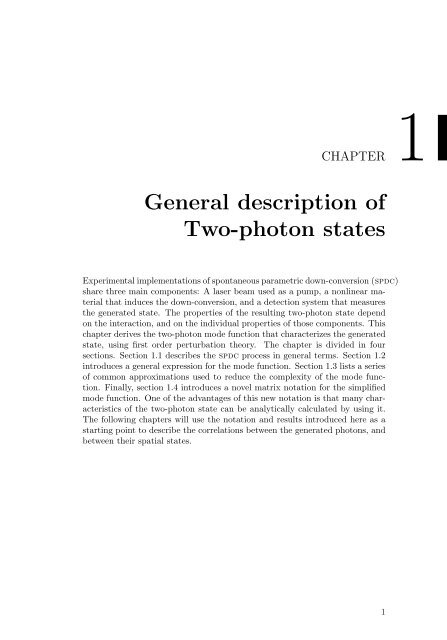Spatial Characterization Of Two-Photon States - GAP-Optique
Spatial Characterization Of Two-Photon States - GAP-Optique
Spatial Characterization Of Two-Photon States - GAP-Optique
You also want an ePaper? Increase the reach of your titles
YUMPU automatically turns print PDFs into web optimized ePapers that Google loves.
CHAPTER 1<br />
General description of<br />
<strong>Two</strong>-photon states<br />
Experimental implementations of spontaneous parametric down-conversion (spdc)<br />
share three main components: A laser beam used as a pump, a nonlinear material<br />
that induces the down-conversion, and a detection system that measures<br />
the generated state. The properties of the resulting two-photon state depend<br />
on the interaction, and on the individual properties of those components. This<br />
chapter derives the two-photon mode function that characterizes the generated<br />
state, using first order perturbation theory. The chapter is divided in four<br />
sections. Section 1.1 describes the spdc process in general terms. Section 1.2<br />
introduces a general expression for the mode function. Section 1.3 lists a series<br />
of common approximations used to reduce the complexity of the mode function.<br />
Finally, section 1.4 introduces a novel matrix notation for the simplified<br />
mode function. One of the advantages of this new notation is that many characteristics<br />
of the two-photon state can be analytically calculated by using it.<br />
The following chapters will use the notation and results introduced here as a<br />
starting point to describe the correlations between the generated photons, and<br />
between their spatial states.<br />
1



